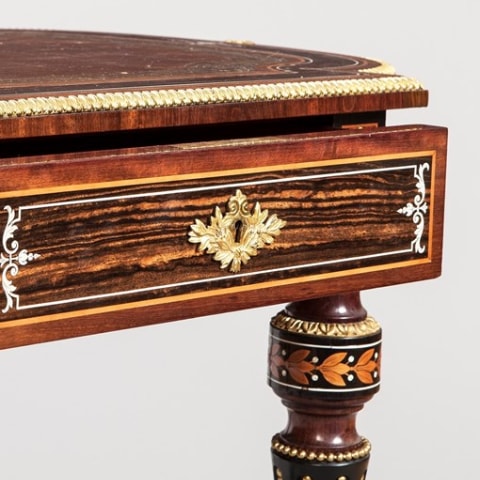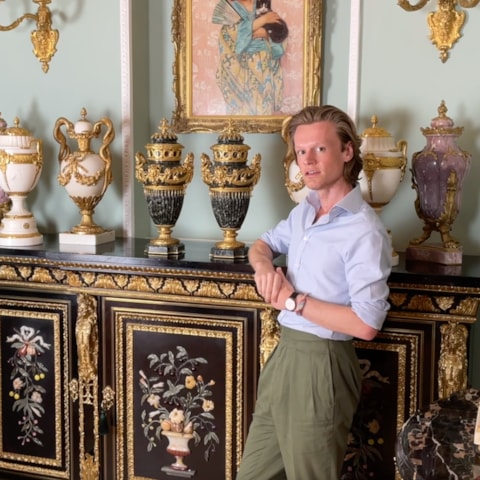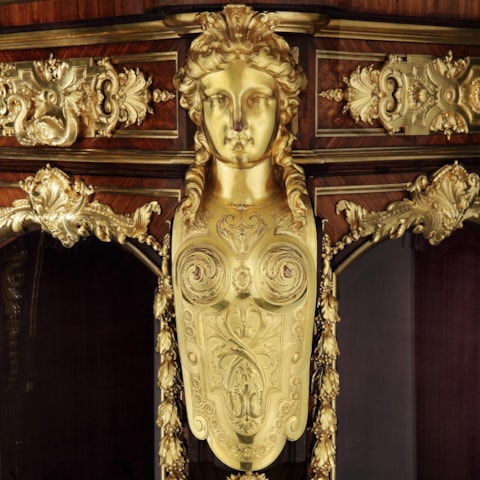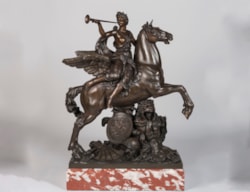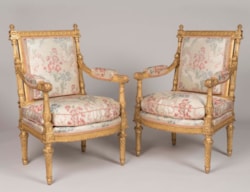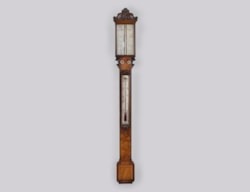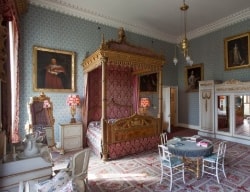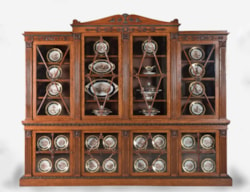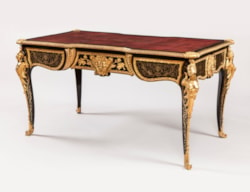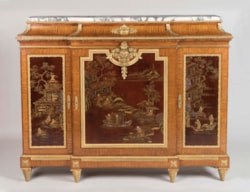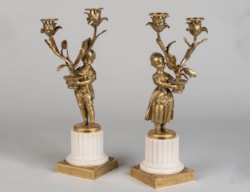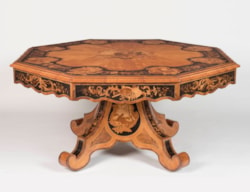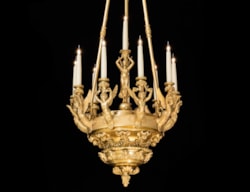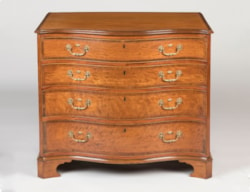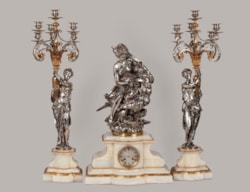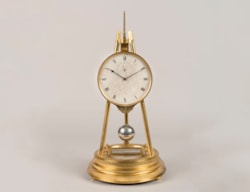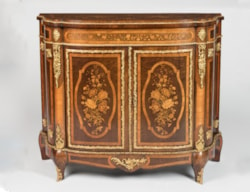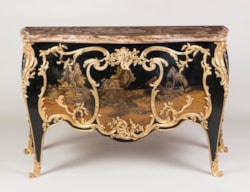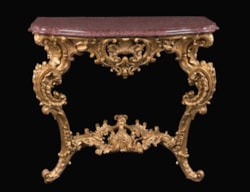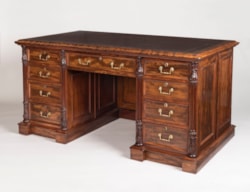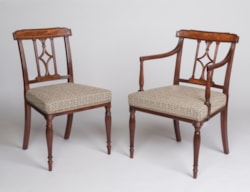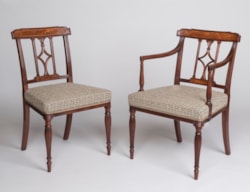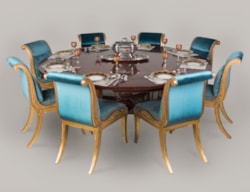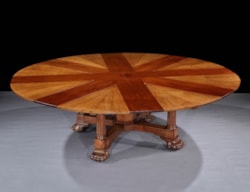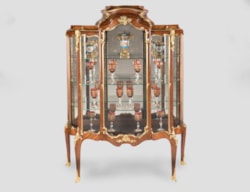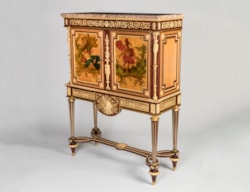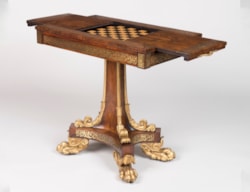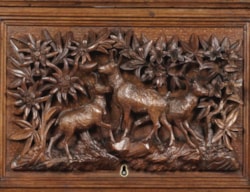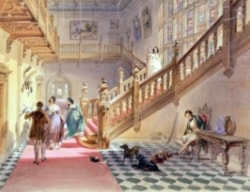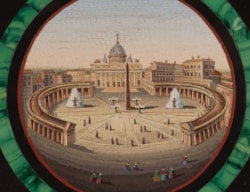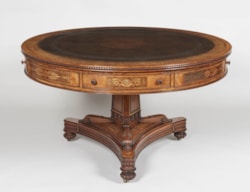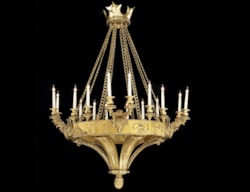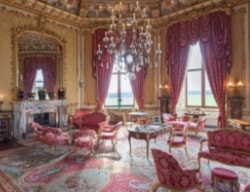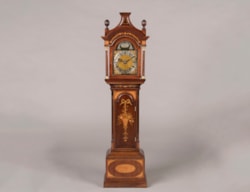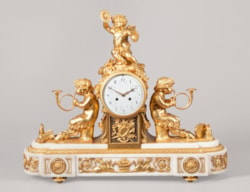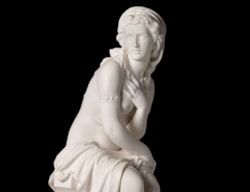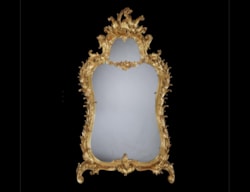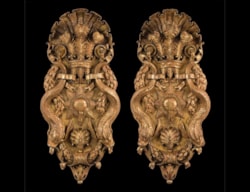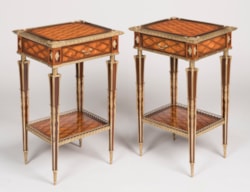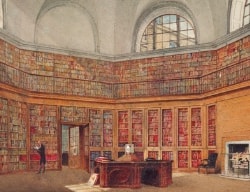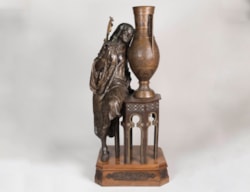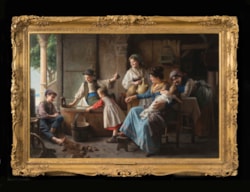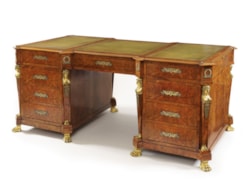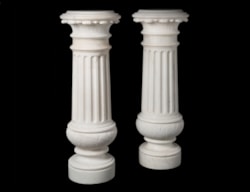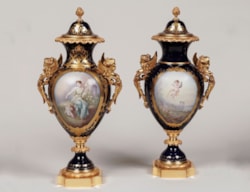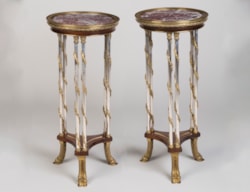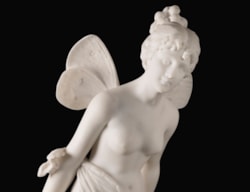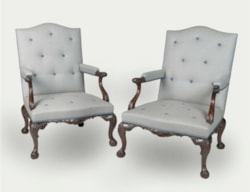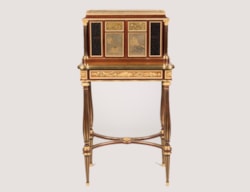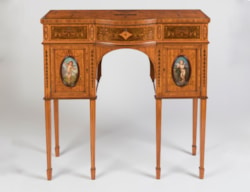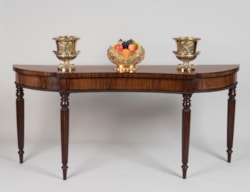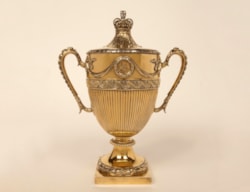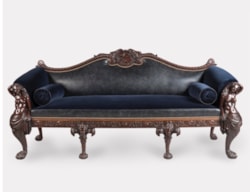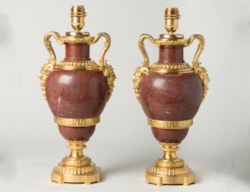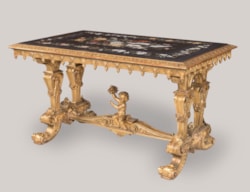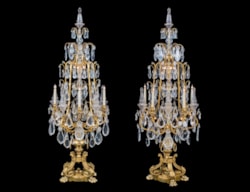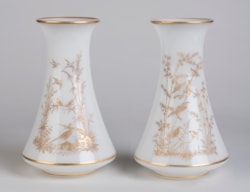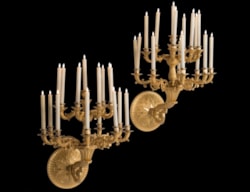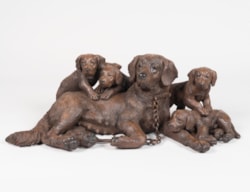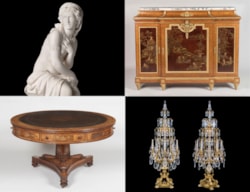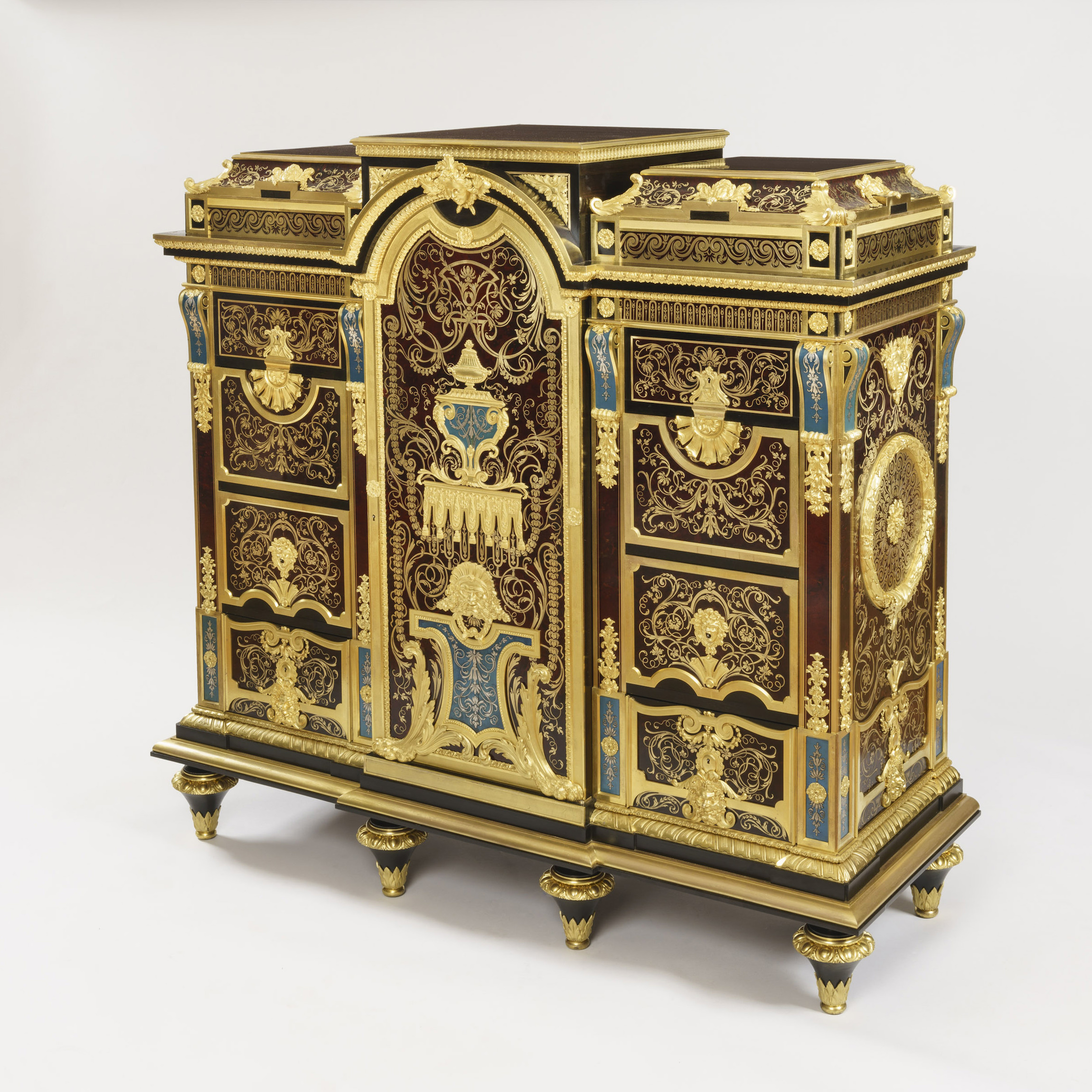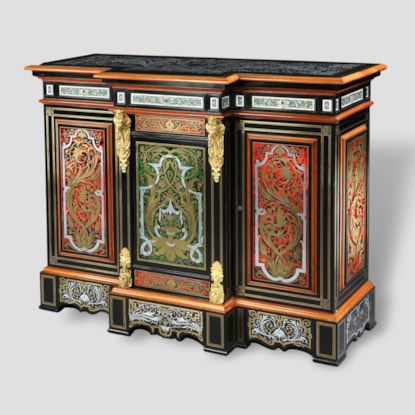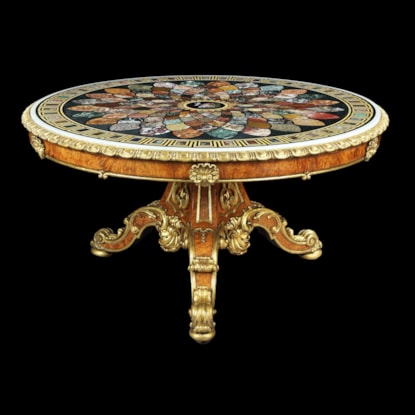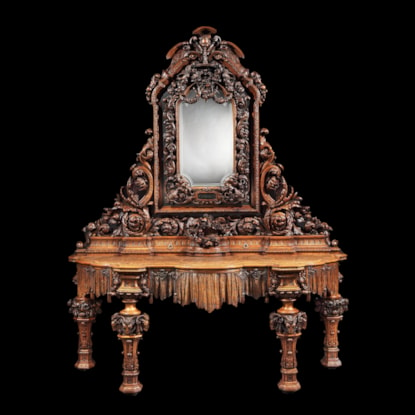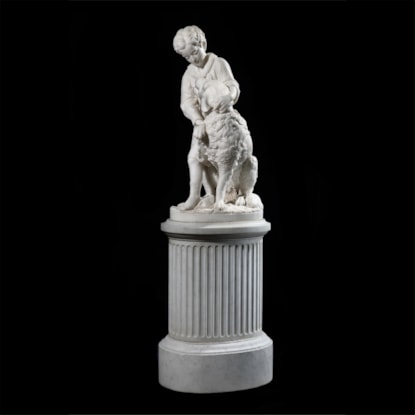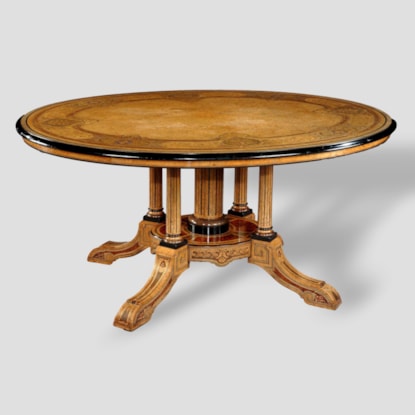A Very Fine Cabinet by Charles-Guillaume Winckelsen
A Very Fine Cabinet by Charles-Guillaume Winckelsen
Dimensions: H: 53 in / 134 cm | W: 56 in / 141 cm | D: 23.5 in / 59 cm
Sold
A Very Fine Cabinet After a Design by André-Charles Boulle
By Charles-Guillaume Winckelsen (1812-1871)
Constructed in ebony and ormolu, adorned exclusively in premiere-partie inlay work of tortoiseshell, pewter, and brass, having rare stained blue horn highlights throughout; rising from circular tapering toupee feet, the tripartite façade emerging from a gentle breakfront plinth, the central door set within an ormolu frame, a central ormolu and blue-horn terrace supporting a finely chased cassolette (perfume-burner), with lambrequins, masks and bold paw feet below and flanked by four lockable oak-lined drawers to each side of unique design, all adorned in the Baroque arabesque manner and having curvilinear bronze mounts; the sides unified with the facade by way of a conforming lower register of ormolu mounts with a grand central rose cartouche housed within a raised ormolu laurel wreath. Stamped variously "Charles Winckelsen / rue de Turenne à Paris."
French, dated 1869
The Hermitage in Russia houses the so-called Sheremetev pair of cabinets by André-Charles Boulle (1642-1732), the earliest of which is dated circa 1710-1720. According to Jean-Nérée Ronfort Boulle invented this type of cabinet in the late 1680s as indicated by the presence of red copper campanes inserted between the bronze ones. Other eighteenth-century renditions are known including two not quite identical examples in the United States of America, a single example in an English private collection and another in the Duke of Buccleuch's collection at Boughton House.
The rare nineteenth-century copies of this cabinet, including the present one by Winckelsen, took their inspiration following the exhibition of the cabinet at Gore House in 1853. A version made by Henry Dasson and dated 1880 caused much confusion among scholars recently, unable to explain how he executed his work. Having purchased the workshops, and bronze molds, of Winckelsen in 1872, Dasson almost certainly used the identical templates and models that Winckelsen first designed when completing this cabinet in 1869.
Charles-Guillaume Winckelsen (1812-1871)
First came to prominence for the excellence of his work from his address at Rue Val-Sainte-Catherine, and he later worked from Rue de Turenne; specialising in fine furniture, lighting and decoration of the ancien regime; his clients including the Prince Radziwill and the Marquis de Lilliers. Ledoux-Lebard notes the small output of the company, since quality was his main aim; after his death, his stock and workmen were taken over by Henri Dasson (qv).
Denise Ledoux-Lebard. Le mobilier francais du XIXe siècle, 1795-1889 : dictionnaire des ébénistes et des menuisiers, Paris: Éditions de l'amateur, 2000; p. 635.
Christopher Payne. Paris Furniture: The Luxury Market of the 19th Century, Château de Saint-Rémy: Éditions Monelle Hayot, 2018, p. 117.
Jean Nérée Ronfort, André Charles Boulle, 1642-1732: A New Style for Europe. Paris: Somogy, 2011, pp. 208-211.
You may also like

 Vip access
Vip access

 Favourites
Favourites






